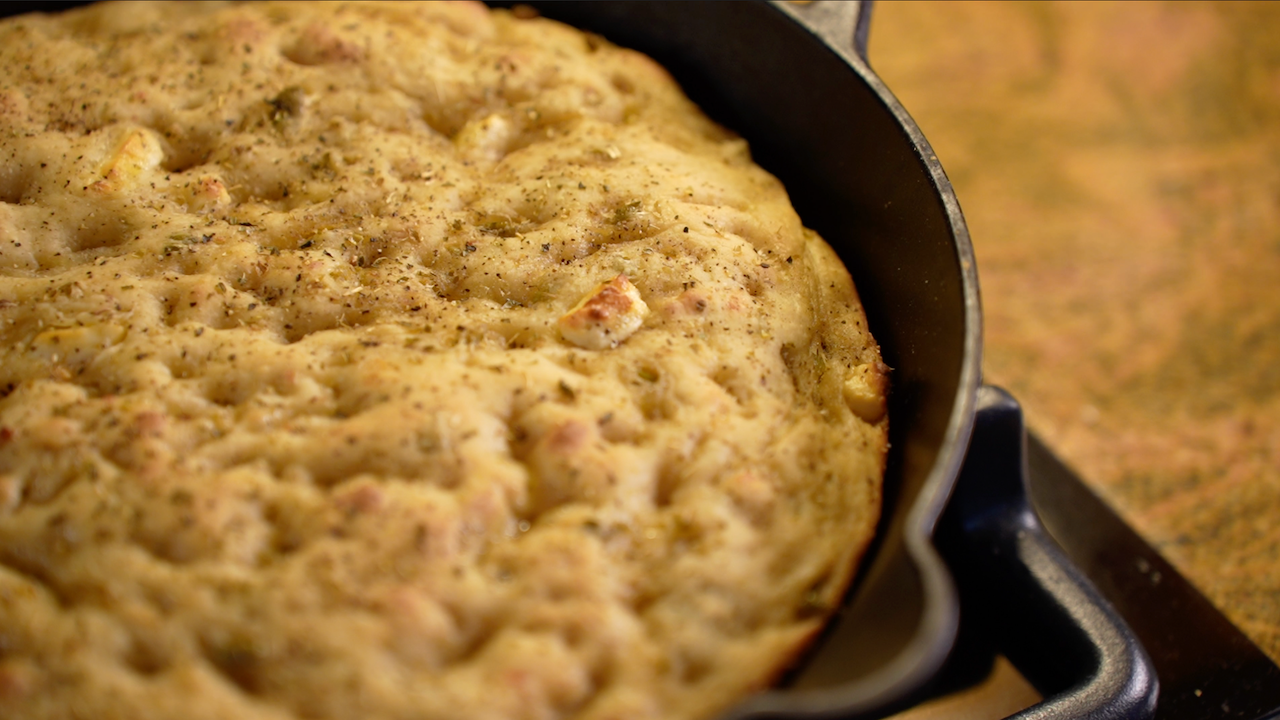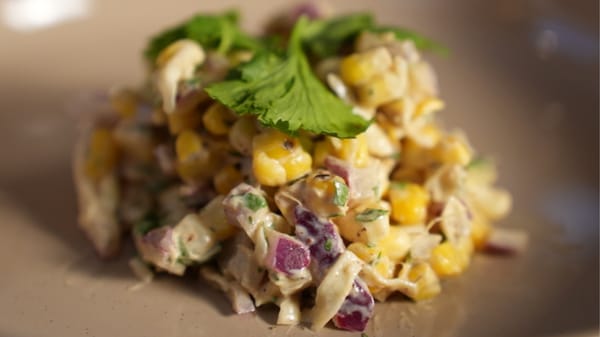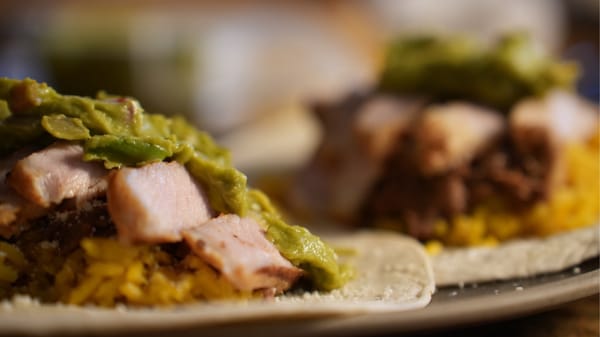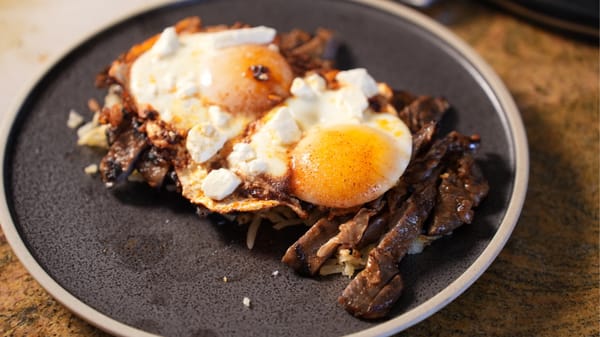Weekly R&R #006: Mediterranean Olive & Feta Focaccia

The Recipe
Ingredients
Dough Base:
- 360g water
- 10g sugar
- 25g olive oil
- 450g bread flour
After Autolyse:
- 4g yeast
- 12g salt
- 20g additional water
Mix-Ins & Toppings:
- 80g pitted olives (Kalamata or Castelvetrano, rough chopped)
- 75g crumbled feta (dry-packed if possible)
- 1–2 tbsp chopped fresh oregano or thyme
- Zest of ½ lemon (optional, adds brightness)
- Cracked black pepper, to taste
- Dried oregano (optional, for top)
- Flaky sea salt (for top)
- Extra olive oil (for pan and final drizzle)
Instructions
1. Autolyse (30 Minutes)
In a large mixing bowl:
- Combine 360g water, 10g sugar, 25g olive oil, and 450g bread flour.
- Mix until fully hydrated — no dry spots.
- Cover and let rest for 30 minutes.
2. Add Yeast, Salt & Water
- Sprinkle in 4g yeast, 12g salt, and 20g water.
- Mix well until dough is smooth and elastic.
3. First Stretch & Fold
- After 30 minutes, perform a stretch-and-fold:
- Pull each side of the dough up and fold toward the center.
- Rotate and repeat until all four sides have been folded.
- Shape gently into a round.
4. Add Mix-ins
- Gently fold in:
- ⅔ of the chopped olives
- ⅔ of the feta
- Chopped herbs
- Lemon zest (if using)
- Use light hands — a little uneven distribution is okay.
5. Second Stretch & Fold
- After another 30 minutes, repeat the stretch-and-fold process.
- Reshape and cover the bowl.
6. Cold Fermentation
- Place covered bowl in the refrigerator overnight (8–24 hours).
Next Day: Proof & Bake
7. Prepare Pan & Proof
- Oil a baking pan generously with olive oil (2–3 tbsp).
- Transfer chilled dough into pan and gently stretch it toward the corners.
- Let rise at room temperature for 1.5 to 2 hours, uncovered or loosely covered.
8. Dimple & Top
- Preheat oven to 450°F (232°C).
- Oil your fingertips and dimple the dough deeply all over.
- Drizzle more olive oil on top.
- Sprinkle remaining olives, feta, cracked black pepper, and optional dried oregano.
- Finish with flaky sea salt.
9. Bake
- Bake for 20–25 minutes, until golden brown and crisp on the edges.
- Optional: Broil for 1–2 minutes at the end for extra color (watch closely).
10. Rest & Serve
- Let cool on a wire rack for 15–20 minutes before slicing.
- Serve warm or room temperature.
Storage Tips
- Wrap in foil or store in an airtight container at room temp for up to 2 days.
- Reheat at 350°F for 5–8 minutes to revive the crust.
The Reflection
Focaccia has become one of those recipes I return to with relative frequency (often as I am cooking something else in parallel), because it’s endlessly adaptable and equally forgiving.
The pantry staples are always there — flour, oil, salt — and from that base you can take it in almost any direction. I think of it as a blank canvas for flavor. Over the years I’ve experimented with a few different versions: a bacon and cheddar breakfast focaccia, where chopped bacon runs through the dough and it’s perfect for slicing and adding eggs for an easy breakfast sandwich when you’ve got visitors; a rosemary and aged white cheddar version in the fall that feels hearty and sharp (great for chicken sandwiches); and even a few sweet focaccias I’ve seen floating around online that I’m curious to try next.
This particular version started with a gift. A friend had just returned from Greece and brought back some olives, and I wanted to use them in a way that let them shine. Focaccia felt like the natural choice. Folded into the dough with feta, oregano, and a bit of lemon zest, the olives gave the bread that briny, bright kick that instantly pulled it into Mediterranean territory.
Part of what I love about making focaccia is the rhythm of it. Mixing, folding, waiting, dimpling. The process feels steady, but there’s so much room to improvise along the way. Scatter the toppings unevenly, let some herbs fall into the corners, drizzle olive oil without worrying about precision — it’s all part of the charm. Unlike some breads, focaccia rewards curiosity rather than punishing imperfection.
And that’s what makes it such a natural food for sharing. The uneven bubbles, the scattered toppings, the rustic edges — those aren’t flaws, they’re what give it character. When I made this version, I was able to enjoy it with the same friend that brought me the olives. It became less about the bread itself and more about something we could enjoy together.
In the end, focaccia is just bread, oil, salt, and time. But baked into it is something larger: a reminder that what you create doesn’t need to be perfect to be shared. Its unevenness is part of its generosity — an invitation to break off a piece, pass it along, and keep the cycle of creating and giving going.





